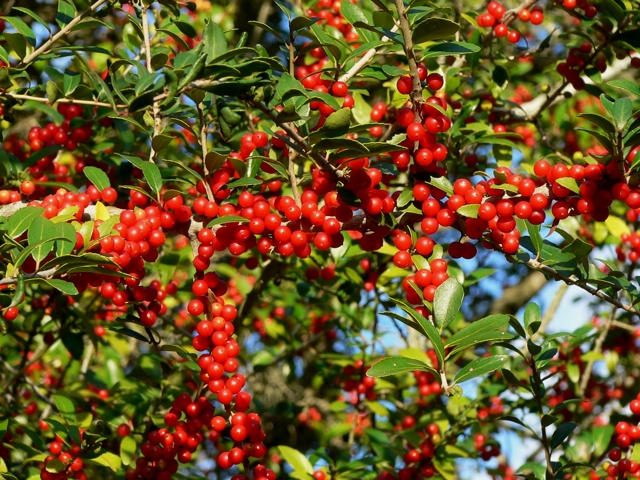Yaupon
(Ilex vomitoria)
Yaupon (Ilex vomitoria)
/
/

Jean Pawek
CC BY 3.0











































































Estimated Native Range
Summary
Yaupon is distinguished from the similar Ilex cassine by its smaller leaves with a rounded apex. In cultivation, Yaupon is highly adaptable, thriving in full sun to part shade conditions, and is drought-tolerant once established, requiring low amounts of water. It prefers well-drained soils but can tolerate a range of soil types. Its dense growth habit makes it an excellent choice for hedges, screens, or as a specimen plant in residential landscapes. Despite its common name, Yaupon does not induce vomiting unless consumed in large quantities.CC BY-SA 4.0
Plant Description
- Plant Type: Shrub, Tree
- Height: 10-20 feet
- Width: 8-12 feet
- Growth Rate: Slow
- Flower Color: N/A
- Flowering Season: Spring
- Leaf Retention: Evergreen
Growth Requirements
- Sun: Full Sun, Part Shade
- Water: Medium, High
- Drainage: Fast, Medium
Common Uses
Bank Stabilization, Bee Garden, Bird Garden, Border Plant, Butterfly Garden, Deer Resistant, Drought Tolerant, Erosion Control, Fire Resistant, Fragrant, Hedges, Low Maintenance, Potted Plant, Rabbit Resistant, Rock Garden, Salt Tolerant, Street Planting, Water Garden
Natural Habitat
Well-drained sandy soils and can be found on the upper edges of brackish and salt marshes, sandy hammocks, coastal sand dunes, inner-dune depressions, sandhills, maritime forests, nontidal forested wetlands, well-drained forests and pine flatwoods.
Other Names
Common Names: Winterberry
Scientific Names: Ilex vomitoria , Ilex ligustrina , Ilex minutiflora f. parvifolia , Ilex minutiflora , Ilex vomitoria f. pendula , Ilex ligustrina f. ekmanii , Ilex ligustrina f. parvifolia , Ilex ligustrina var. minutiflora , Cassine vomitoria , Ilex ligustrina var. typica
GBIF Accepted Name: Ilex vomitoria Sol. ex Aiton